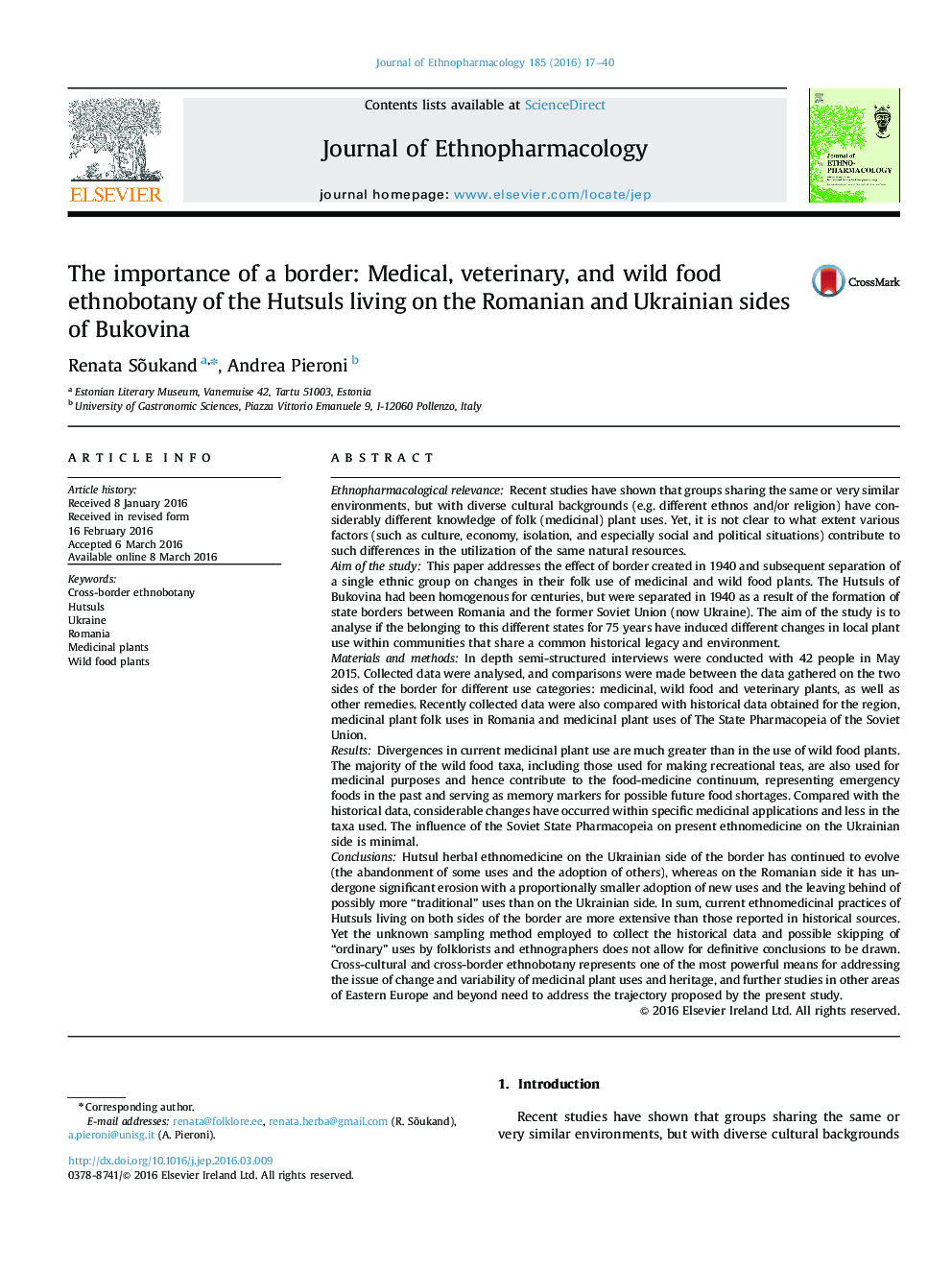| کد مقاله | کد نشریه | سال انتشار | مقاله انگلیسی | نسخه تمام متن |
|---|---|---|---|---|
| 2544824 | 1560377 | 2016 | 24 صفحه PDF | دانلود رایگان |
Ethnopharmacological relevanceRecent studies have shown that groups sharing the same or very similar environments, but with diverse cultural backgrounds (e.g. different ethnos and/or religion) have considerably different knowledge of folk (medicinal) plant uses. Yet, it is not clear to what extent various factors (such as culture, economy, isolation, and especially social and political situations) contribute to such differences in the utilization of the same natural resources.Aim of the studyThis paper addresses the effect of border created in 1940 and subsequent separation of a single ethnic group on changes in their folk use of medicinal and wild food plants. The Hutsuls of Bukovina had been homogenous for centuries, but were separated in 1940 as a result of the formation of state borders between Romania and the former Soviet Union (now Ukraine). The aim of the study is to analyse if the belonging to this different states for 75 years have induced different changes in local plant use within communities that share a common historical legacy and environment.Materials and methodsIn depth semi-structured interviews were conducted with 42 people in May 2015. Collected data were analysed, and comparisons were made between the data gathered on the two sides of the border for different use categories: medicinal, wild food and veterinary plants, as well as other remedies. Recently collected data were also compared with historical data obtained for the region, medicinal plant folk uses in Romania and medicinal plant uses of The State Pharmacopeia of the Soviet Union.ResultsDivergences in current medicinal plant use are much greater than in the use of wild food plants. The majority of the wild food taxa, including those used for making recreational teas, are also used for medicinal purposes and hence contribute to the food-medicine continuum, representing emergency foods in the past and serving as memory markers for possible future food shortages. Compared with the historical data, considerable changes have occurred within specific medicinal applications and less in the taxa used. The influence of the Soviet State Pharmacopeia on present ethnomedicine on the Ukrainian side is minimal.ConclusionsHutsul herbal ethnomedicine on the Ukrainian side of the border has continued to evolve (the abandonment of some uses and the adoption of others), whereas on the Romanian side it has undergone significant erosion with a proportionally smaller adoption of new uses and the leaving behind of possibly more “traditional” uses than on the Ukrainian side. In sum, current ethnomedicinal practices of Hutsuls living on both sides of the border are more extensive than those reported in historical sources. Yet the unknown sampling method employed to collect the historical data and possible skipping of “ordinary” uses by folklorists and ethnographers does not allow for definitive conclusions to be drawn. Cross-cultural and cross-border ethnobotany represents one of the most powerful means for addressing the issue of change and variability of medicinal plant uses and heritage, and further studies in other areas of Eastern Europe and beyond need to address the trajectory proposed by the present study.
Figure optionsDownload high-quality image (236 K)Download as PowerPoint slide
Journal: Journal of Ethnopharmacology - Volume 185, 5 June 2016, Pages 17–40
